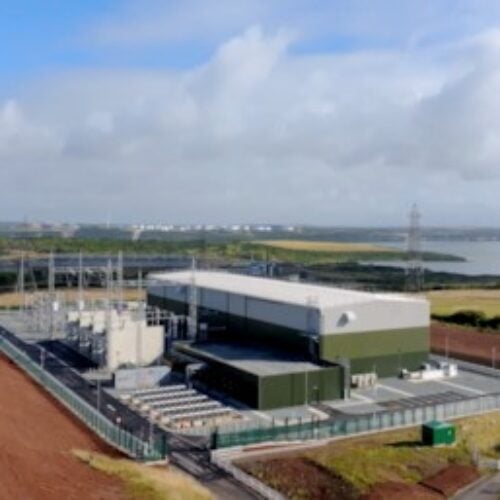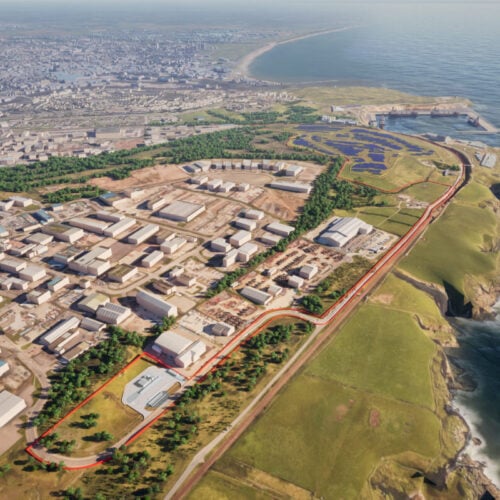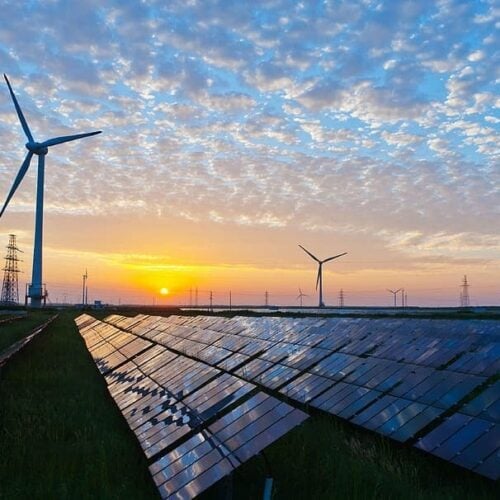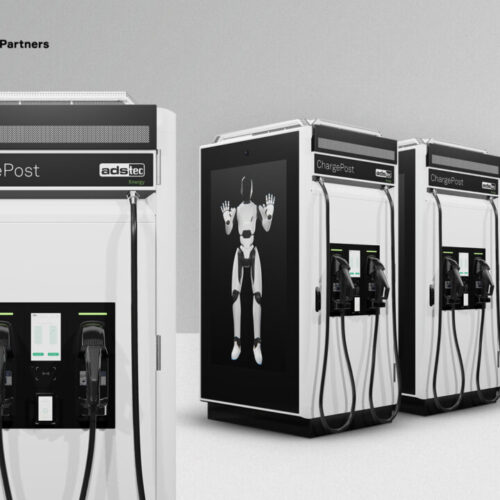The coldest weather since 1989 hit Texas last month, knocking out much of its generation capacity and leading to rolling blackouts amidst a devastating statewide crisis.
With the impacts of climate change being felt increasingly acutely around the world, concern that extreme weather events such as the one in the US state could shut down power supplies in other nations has unsurprising raised its head.
“The key takeaway from the Texas energy crisis is that the aging physical grid and energy systems – not just in Texas but across the US – are not prepared for extreme weather events,” said Jay Zoellner, CEO of Kiwi Power. “In Texas, a perfect storm of failed supply (mostly from fossil fuel and nuclear power plants, but from some wind resources as well) and historically-high demand caused the grid to fail.”
The last blackout experienced in the UK was on 9 August 2019, when an extreme weather event – a lightning strike as opposed to a cold snap – took out Hornsea offshore wind farm and caused a trip at Little Barford’s steam turbine. It lasted just less than an hour, but as the first major blackout for more than a decade it caused concern that the grid was vulnerable.
As industry and legislators look for lessons to be learnt to avoid a situation like that in Texas ever happening again, Current± asked if an extreme weather event could ever lead to rolling blackouts in the UK.
Interconnection vs. independence
One of the key considerations with the blackouts is the lack of interconnection with Texas’ grid – managed by the Electric Reliability Council Of Texas (ERCOT) – and the rest of the US. The majority of the US is connected to ether the Eastern Interconnection or the Western Interconnection, allowing states to trade electricity between them.
ERCOT however has remained proudly separate, which has allowed it to run free of federal oversight and regulations. Historically this has been thought to be beneficial for the state, as the leading energy producer in America given its energy wealth in oil, natural gas and renewables.
But this left it more reliant on its own generators during the extreme weather seen in February. As gas pipes and coal piles froze, nuclear struggled and some wind generation had to be halted, Texas could not rely on interconnection with its neighbours to any great extent to manage soaring demand as people turned on electric heaters.
The UK currently has 4GW of interconnector capacity, offering a greater degree of resilience. As the country transitions to a more renewable energy mix, generation is by its nature more dependent on the weather. For example, in January low winds and cold weather caused Britain’s grid to struggle, leading National Grid ESO to issue a number of Electricity Margin Notices (EMNs). By having an operating margin in place, operators are able to better manage risk from extreme events. While Texas does have a similar buffer in place, the level has dropped by 10% since 2010.
When National Grid ESO issued the EMNs, UK based assets and those in Europe were both able to respond to the increased demand, ensuring that the nation’s buffer of additional capacity was always full. When margins are tight due to low winds, greater levels of power can be imported through interconnectors from Europe, offering greater protection to the country.
A further element to consider is that due to its lack of interstate connection, the impact of Federal Regulatory Commission’s (FERC) Order 841 provision is limited. This ensures distributed energy storage can play into the wholesale market, offering increased flexibility, however the reduced Federal oversight in Texas means it could not benefit from such a provision.
ERCOT does not have a Capacity Market in the way that other grids in the US and the UK do. In Britain, National Grid ESO runs a number of different auctions to secure capacity ahead of time to ensure power supply well in advance. In Texas’s deregulated energy market however, ERCOT uses scarcity pricing to ensure reliability, but that can cause real prices to shoot up when generation becomes more strained – such as during an extreme weather event – and put further pressure on the market.
“The big difference between ERCOT and the UK is the lack of Reserve markets,” said Zoellner. “Where ERCOT uses price signals to drive behaviour, the UK’s National Grid has the option of calling on additional power using DERs (distributed energy resources).
“Kiwi provides over 10% of the MWs to National Grid’s Short-Term Operating Reserve (STOR). Assets participating in STOR are paid an availability fee (£/MW/hour) to be available in case of back up. In February and March 2018 STOR was utilised 50% more than average in February and 40% more in March, that is an additional 18GWh of energy available to National Grid in terms of stress.”
Does a more flexible market equal a more resilient one?
Greater flexibility in a grid can create greater reliability of supply, allowing for more alternatives if something constrains supply. In Britain, National Grid ESO has been working to make the electricity network more flexible through a number of pathways including EMNs and STOR.
Speaking to Current±, National Grid ESO highlighted that it has plans to cope with a wide range of possible scenarios, and severe weather is a key consideration within those. In order to make sure the grid is as resilient as possible, the operator has brought in a number of mechanisms to cope with extreme scenarios.
Recently this has included Dynamic Containment and the Accelerated Loss of Mains Change Programme (ALoMCP), which is reducing distributed generators’ sensitivity to frequency changes. Dynamic Containment came in in October 2020 – although both it and ALoMCP had been in the works since before the 2019 blackout – and provides post-fault response, for example if an interconnector trips.
Elements like these have helped to reinforce the grid, and help in managing extreme events, be it weather or other factors, especially over short time periods, while STOR ensures there is reserve in place for more prolonged periods of grid constraint.
“In the UK, Kiwi Power contributes significantly to National Grid’s Reserve markets program,” continued Zoellner. “During the Anticyclone Hartmut storm in 2018 in the UK, a prominent emergency scenario dubbed ‘the Beast of the East,’ Kiwi Power was able to provide 18GW of reserve energy from distributed energy resources to the grid, avoiding the need for outages like we saw in Texas.
“Flexible markets with sophisticated VPPs (virtual power plants) alongside additional clean generation and storage will ensure Texas does not get hit by this type of crisis again. These improvements will combine to make up the energy systems of the future that can withstand the impacts of the climate crisis. And, over time, as the size and flexibility of these systems grow, they will prevent major energy catastrophes like we saw in Texas. “
Lessons learnt from the blackout
There were numerous factors to the blackouts in Texas, not least how unprecedented it was. The extreme cold meant gas, nuclear and wind generation dropped off dramatically, with 45,000MW of generation capacity offline at points. This meant grid operators had to initiate power cutoffs to avoid widespread failures that could have led to months of problems.
But the structure of the market in Texas undoubtedly played a significant role, without interconnection or a strong enough reserve or flexibility pathway to manage the soaring demand.
For that reason it is highly unlikely that the UK would experience a similar outage due to an extreme event, given the array of systems in place to step in should freezing cold, howling gail or lightning strike hit the system.
Giles Stevens, director of policy at the National Infrastructure Commission, added that the system has “for the most part” proved resilient to shocks and stresses.
“But the tragic experience of Texas shows us there is no room for complacency, especially as weather patterns become more volatile. As the Commission’s study on the topic found last year, maintaining a resilient system requires a proactive approach.
“We’ve proposed a framework that faces uncomfortable truths, values resilience properly, tests for vulnerabilities and drives adaptation before it is too late. That framework can be supported by transparent resilience standards for key sectors, routine stress testing and ensuring that regulators are helping ensure private operators value resilience appropriately.”





